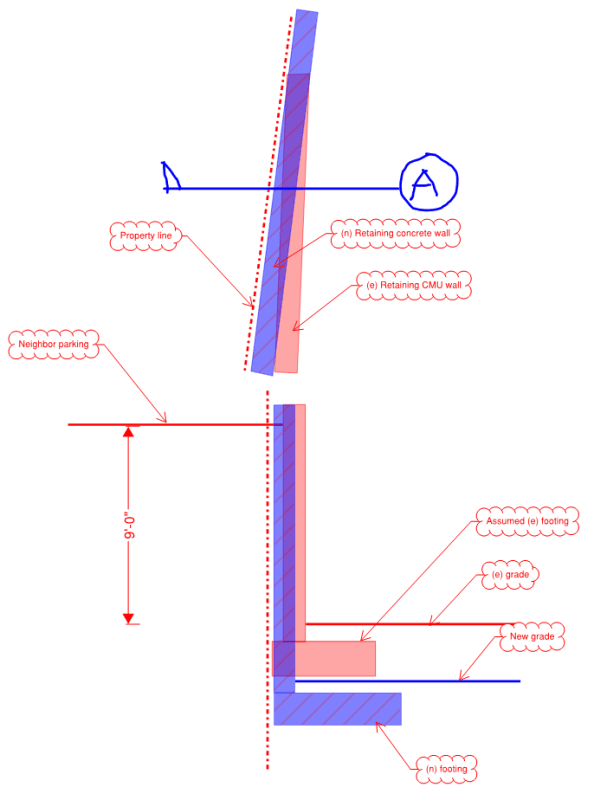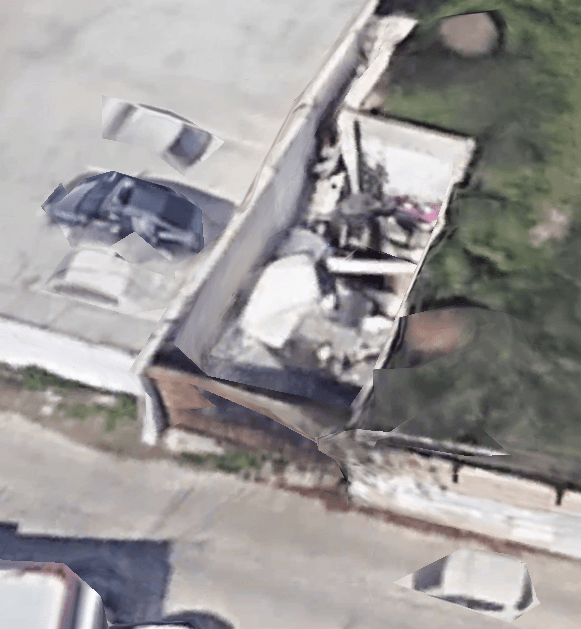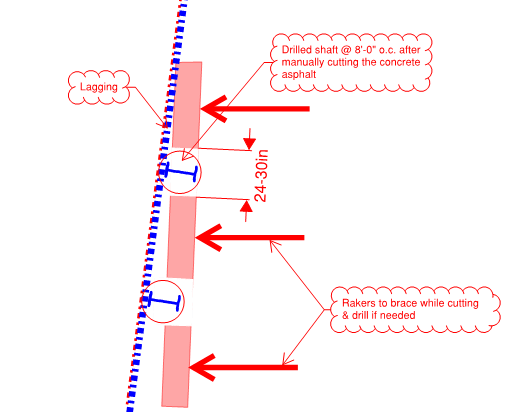hotmailbox
Structural
Please see sketches below to understand the situation. I know this is pretty common but I don't have much experience in how shoring contractor works and what their capabilities are so I am not so sure how to install soldier piles in this particular area to build the new concrete wall.
Does it make sense to brace the existing CMU wall then saw cut 24" or more wide vertical strip including existing foundation (if we can't core through it) at the soldier pile locations for drilling then install I beam as normal? What else can you do in this case?

Does it make sense to brace the existing CMU wall then saw cut 24" or more wide vertical strip including existing foundation (if we can't core through it) at the soldier pile locations for drilling then install I beam as normal? What else can you do in this case?




